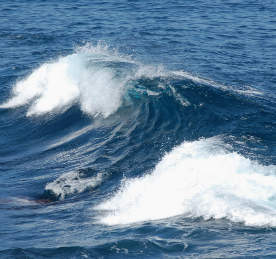Despite the claims of several countries bordering the South China Sea, the territorial disputes will not hold back oil exploration, Mark Brierley reports.

Natural resources have often been cited as the reason for many a territorial claim through the centuries, whether that be gold, water or oil. Tensions in the South China Sea have been steadily rising over the past few years as successive geological surveys have revealed massive oil and gas reserves lying beneath the waves.
Several countries bordering the sea – China, Vietnam, Malaysia, Taiwan, the Philippines and Brunei – all stake competing claims over the proven 11 billion barrels of oil and 190 trillion cubic feet of natural gas that have yet to be tapped. The US geological survey estimates these figures could yet be revised upwards as other areas of the region are explored.
With energy consumption rising rapidly in several of these countries, the impetus for claiming these reserves is clear to see. The total installed electricity generation capacity in China doubled between 2005 and 2011, whereas Vietnam currently imports 60% of its oil – a figure the government is trying to reduce by developing its own resources and producing more oil domestically.
But all that has been produced so far is deadlock, with each country unable to even agree on a name for the sea. Most often called the South China Sea internationally, it is variously known as the East Sea in Vietnam, the West Philippine Sea and the South Sea in China.
A conflicting picture
Tensions have been raised as a result of Vietnamese protests over disruption to its exploration activities from the Chinese fishing fleet. The Philippines have also voiced concerns over the increasing presence of the Chinese in the area around Scarborough Shoal, which is claimed by both countries. With China’s ever-increasing naval power, there are fears the disagreement could escalate into the sort of dispute seen with Japan in 2012 over the Senkaku Islands. Christopher Hughes, professor of international politics and Japanese studies at the University of Warwick, called that situation "the most serious for Sino-Japanese relations in the post-war period in terms of the risk of militarised conflict". Tensions reached their peak when Japanese and Chinese coastguard vessels engaged and collided, and fighter jets on both sides were scrambled to monitor each other’s ships.
Fearful of similar escalation in the South China Sea, several members of the Association of South-East Asian Nations (ASEAN) – Vietnam, Malaysia, Taiwan, the Philippines and Brunei – sought to engage with China on a diplomatic level to resolve the dispute at the 2013 ASEAN-China Summit in Brunei. Benigno Aquino III, president of the Philippines, diplomatically referred to the disputed area as "this sea known by many names", but was clear in his desire to resolve the conflict to avoid the risk of damaging the region’s economic growth. "Our development as a region cannot be realised in an international environment where the rule of law does not exist," he said, pushing for a code of conduct, to be drawn up under the watchful eye of the UN, designed to settle each country’s claims.
Open water
China, whose claim over the sea is by far the greatest, has the most to lose from any formal international agreement and so has actively begun seeking cooperation with neighbouring states on the joint development of hydrocarbons. In October 2013, Chinese Premier Li Keqiang visited Hanoi with the aim of boosting economic cooperation between Vietnam and China, following similar agreements worth $5 billion with Malaysia and $28 billion with Indonesia.
This follows a difficult period in 2012 involving Petrovietnam and China National Offshore Oil Corporation (CNOOC), when the latter called for international bids to explore the Gulf of Tonkin, an area claimed by both countries. Relations have since improved, with the extension and expansion of a joint agreement to explore the gulf. The agreement will now be in place until 2016 and expand the area covered from 1,541km2 to 4,076km2.
Such agreements could be a sign of things to come, with China realising that joint development of contested resources is better than no development at all. Its recent diplomatic blitz with members of the ASEAN community could yet bear more fruit, or more oil. With production so far largely confined to each country’s exclusive economic zone, joint developments such as this are critical to meeting future energy demands in the region.
GlobalData is the premier source of actionable insight into the oil and gas industry. With the combined expertise of more than 1,000 researchers, market analysts and consultants, it provides high-quality, accurate and transparent industry insight that helps those in the industry achieve growth and increase business value.To access this and other information,visit www.globaldata.com.
